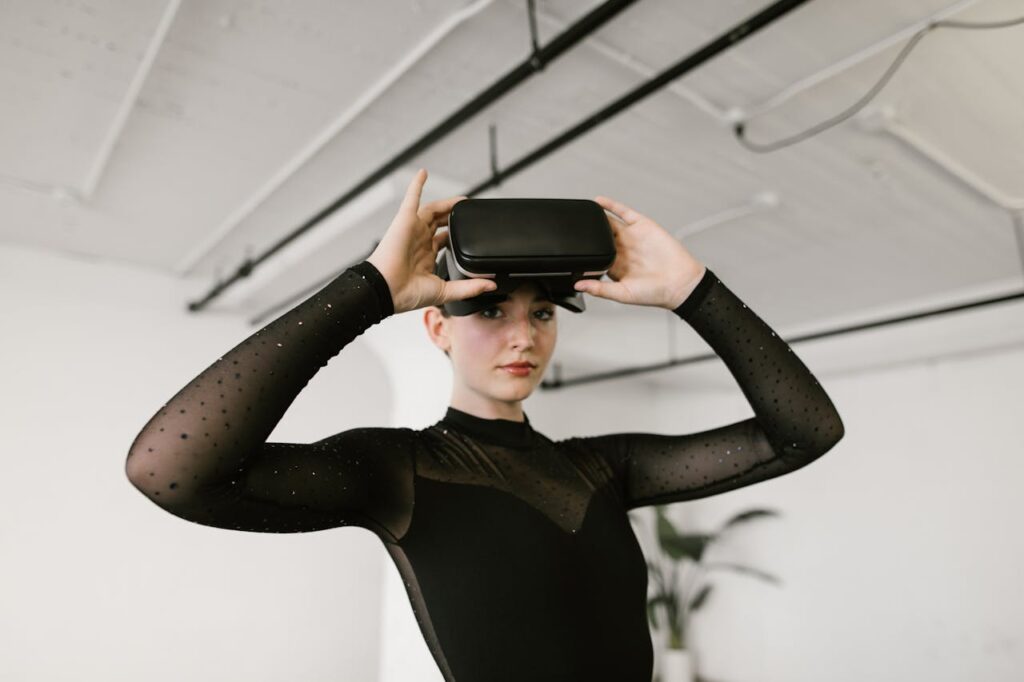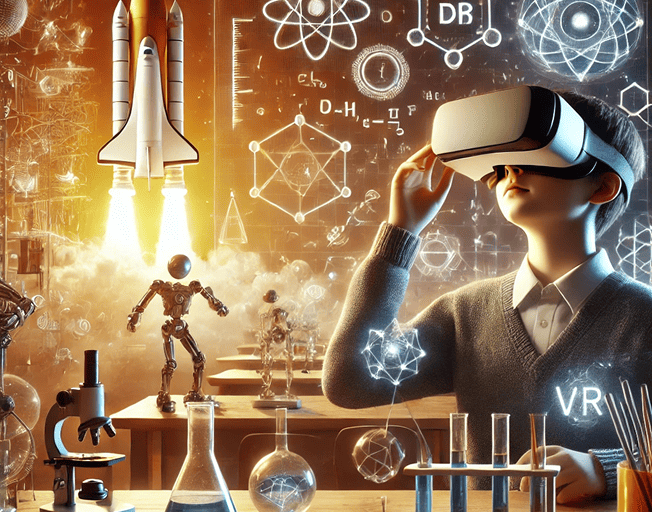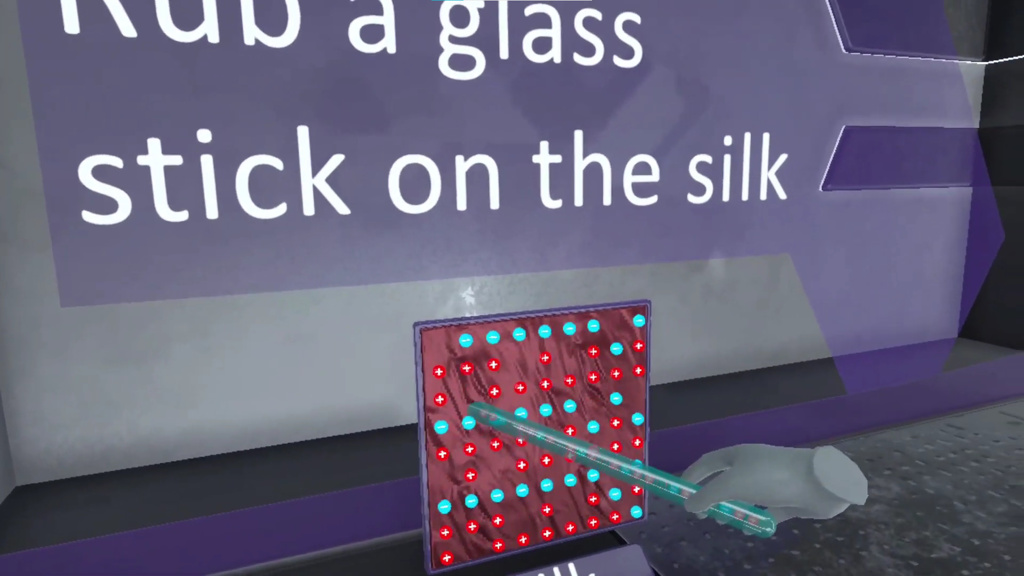Interest in Science, Technology, Engineering, and Mathematics (STEM) has reached a critical juncture. While STEM subjects are more crucial than ever, many middle and high schools observe a noticeable decline in student enthusiasm. Researchers point to a range of factors, including classroom methods and curriculum complexity. Now, a growing body of work underscores yet another pivotal influence: the power of media and public perception in shaping whether students embrace—or abandon—STEM paths. Here’s a detailed look at how external forces can dampen or ignite young learners’ passion for physics, biology, chemistry, and beyond, along with how virtual reality education is changing the dynamic.
Recap: Why STEM Enthusiasm Slips

-
Too Many Abstractions
Traditional lectures often emphasize theory at the expense of practical experiences. Without concrete, relatable applications, students can lose interest in formulas and data. -
Complexity Without Hands-On Support
As STEM subjects deepen, students may feel overwhelmed. Labs and experiments can provide necessary grounding, but these opportunities are not always available. -
Limited Use of Classroom Technology
Although many schools have begun adopting tech-based tools, reliance on standard textbook-and-lecture methods often persists. As a result, students miss out on newer approaches—like VR in education or interactive classroom activities—that could make learning more engaging.
The Media Factor: A Quiet Influencer
A recent study in the International Journal of STEM Education highlights just how strongly media narratives can sway teenagers’ career goals. Social media platforms, streaming services, and traditional television frequently glorify sports and entertainment professions while neglecting STEM. This lopsided coverage shapes cultural norms and peer conversations.
- Perception of Prestige: If a subject rarely appears in mainstream culture, it risks being seen as “boring” or irrelevant, especially among young viewers.
- Lingering Stereotypes: From the “mad scientist” to the “nerdy researcher,” outdated portrayals continue to discourage students who can’t see themselves fitting such roles.
The result? Many teens gravitate toward high-profile fields because they see those paths splashed across screens, social networks, and news feeds.
Society’s Part in Boosting or Burdening STEM
Media and society often move in lockstep. When the spotlight consistently falls on certain careers, adolescents feel more social acceptance in pursuing them. Conversely, STEM fields lacking broad media representation can appear off-limits or less celebrated.
- Peer Discussions: Teens discuss trending online topics. If STEM rarely shows up or is presented in a dull light, it rarely enters their day-to-day chatter.
- Role Model Scarcity: A lack of visible scientists, engineers, or mathematicians from different backgrounds can reinforce the idea that STEM is exclusive.
- Relevance Gap: When major scientific developments don’t make headlines, students may not realize how essential STEM is to everyday life.
Harnessing Media to Renew STEM Excitement
Rather than fighting the tide, schools, parents, and policymakers can strategically use media to reignite interest in STEM:
- Highlight Real-World Achievements
Feature scientists, tech innovators, and engineers who reflect diverse genders, ethnicities, and cultural backgrounds. - Partner with Content Creators
Collaborate with influencers and production teams to create dynamic stories about STEM breakthroughs, especially in areas like VR physics or VR chemistry. - Elevate STEM on Social Platforms
Share short, visually compelling clips of fascinating experiments, STEM lab activities, or behind-the-scenes research, ensuring that positive science stories reach younger audiences.
How VR in Education Makes a Difference
XReady Lab VR lab: Human Eye Anatomy
To reverse disengagement, forward-thinking schools are implementing immersive, hands-on strategies. One of the most transformative innovations is VR, which merges the virtual realm with real-life learning goals.
Key Benefits of VR in the Classroom
- Active Participation
Virtual reality classroom modules let students do more than listen—they can experiment directly, from VR biology simulations to VR physics demonstrations. - Reduced Risk, Reduced Cost
Hazardous experiments or pricey lab resources become accessible without safety worries or huge budgets. - Appeal to Digital Natives
Today’s students thrive in digital classrooms, and VR education speaks directly to their media habits and attention spans. - Encouragement of Exploration
Virtual reality for education offers iterative problem-solving, where trial and error is part of the process rather than an expensive risk.
XReady Lab specializes in creating VR classrooms tailored to standard curricula, bridging the gap between theoretical knowledge and meaningful engagement.
Generation Alpha: Always Plugged In
The youngest wave of learners is accustomed to smartphones, social media, and interactive technology. Teachers can no longer rely solely on lectures and printouts; Generation Alpha seeks immersive experiences. VR learning capitalizes on this preference by offering:
- 3D Graphics and Simulations
Whether it’s a VR chemistry lab or an advanced STEM lab environment, the ability to manipulate and observe in real-time resonates with visually oriented learners. - Team Collaboration
Multi-user virtual reality in classrooms nurtures communication, creativity, and problem-solving. - Future-Focused Skills
Engaging with cutting-edge tech fosters adaptability, a skill vital for the evolving demands of tomorrow’s workforce.
Steps Toward a STEM Revival
- Adopt Technology Early
Introduce VR models or other digital classroom tools to demonstrate how seemingly abstract concepts—like electromagnetism or cellular biology—work in practice. - Make Role Models Visible
Spotlight real scientists and engineers, especially those who overcame obstacles or come from underrepresented groups. - Collaborate with Media
Work with news outlets, education influencers, and social platforms to give STEM achievements more than a fleeting mention.
Experience VR for Education with a Free Demo

Schools ready to transform their STEM approach can explore a no-cost trial from XReady Lab. The immersive lessons—ranging from VR biology to VR physics and beyond—are specifically designed to reignite curiosity and deepen comprehension.
👉 Request a free demo to discover how virtual reality education can boost STEM engagement and reveal exciting new possibilities for students.
Conclusion
Although many students drift away from STEM, the pervasive influence of media and societal attitudes is a key factor that can be harnessed rather than feared. By highlighting STEM success stories and adopting advanced tools like VR in the classroom, educators and stakeholders can reverse this trend. The future of innovation hinges on empowering young minds to explore, question, and create.
When classrooms become interactive learning hubs—complete with virtual reality technology and real-world applications—STEM’s natural intrigue resurfaces. Showcasing relatable role models, using VR learning platforms, and sharing compelling science stories can help students see themselves as tomorrow’s problem-solvers.





